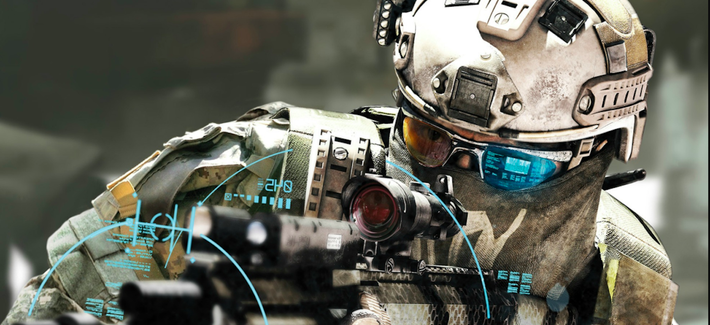BY PATRICK TUCKER
 Drawing trend lines across seven centuries suggests that tomorrow’s troops will rock some seriously heavy gear.
Drawing trend lines across seven centuries suggests that tomorrow’s troops will rock some seriously heavy gear.
In 2050, exoskeleton-equipped soldiers could carry the sorts of heavy machine guns that are today mounted on vehicles, while tanks could be armed with howitzer-class cannons, according to a mathematical formula derived from seven centuries of weapons development.
To build the formula, Army Research Laboratory scientist Alexander Kott carefully scrutinized the performance attributes of weapons across the years, starting with crossbows and proceeding through muskets and tanks.
“Building a model of technology evolution based on performance attributes rather than on design attributes allows us to seek regularities across multiple technology families, increase the temporal span of the investigation, and offer superior capability for longer-term forecasting,” Kott writes in a paper that will appear in the Journal of Defense Modeling and Simulation. (Defense One obtained an early copy.)
Kott’s work looks back at centuries of weapons development, starting with crossbows and proceeding through muskets and tanks, in order to come up with a model to predict future developments in weaponry. (Although he is an U.S. Army scientist, the paper does not represent official doctrine.)
Technological forecasting has been around for decades. The most famous example is Moore’s Law, which forecasts the size and power of computers as a function of the amount of time it takes to double the number of transistors on a chip (roughly 18 months) and the attendant effect on price. Since 1965, it’s been remarkably consistent, allowing hedge fund managers, designers, and entrepreneurs to plan for the future based on the likely availability of computational power at a particular price point.
Kott’s formula does something similar, but with military projectiles rather than computer chips. He examines such factors as the year of the weapon’s creation, the velocity of the projectile it fires, the mass of the projectile and of the weapon itself, how fast the weapon moves, the rate of fire, crew size, and so on. All these aspects are placed in a formula to show how one innovation sets the stage for another one.
Based on his work, Kott believes that advancements in soldier-worn exoskeletons will enable dismounted troops to carry a good deal more armor and firepower as, given current trajectories, they should increase soldier carrying capacity by 50 percent by 2050.
Based on that, and the long-term trends of evolution of firearms in terms of speed of fire and the
kinetic energy they deliver per projectile, he anticipates that future foot soldiers in their battery-
powered armor suits might rock machine gun that are today usually mounted on vehicles or tripods, guns like the Chinese QJZ-89 and the Russian Kord.
Tanks, too, will get heavier and better-armed. Current trends suggest that tank units of 2050 might boast 70-ton tanks crewed by three or four people and armed with a 152mm or even 155mm gun, similar to an M777 howitzer. But Kott also foresees smaller, two-person tanks that can move offroad at 45 kmh, putting up to ten 135mm rounds a minute on targets out to 5,000 meters.
Kott acknowledges that the model can’t anticipate technological advancements, such as in material science or directed energy, that might change the historical trajectory of weapons development.
“It is also possible, however, that an entirely different technology will emerge capable of delivering comparable levels of energy,” he says.
Amid frequent warnings of the limitations of his own approach, Kott’s paper urges more research into what today’s observable trends might tell us about tomorrow’s weapons.
“The extent of the generality for a given law, i.e., how many different technologies it might be possible to describe with a single curve, requires a range of empirical investigations and an appropriate theoretical treatment. Perhaps, these would lead to what might be called universal laws of evolution for very broad types of technologies,” he writes.
In other words, there may exist a universal formula or explanation for the future of weapons development across a variety of sectors, which would allow anyone to predict what sorts of future technologies the militaries of the future might carry in incredible detail. But until researchers can better show how previous innovations in design gave rise to one another, that future will continue to be invisible.
No comments:
Post a Comment